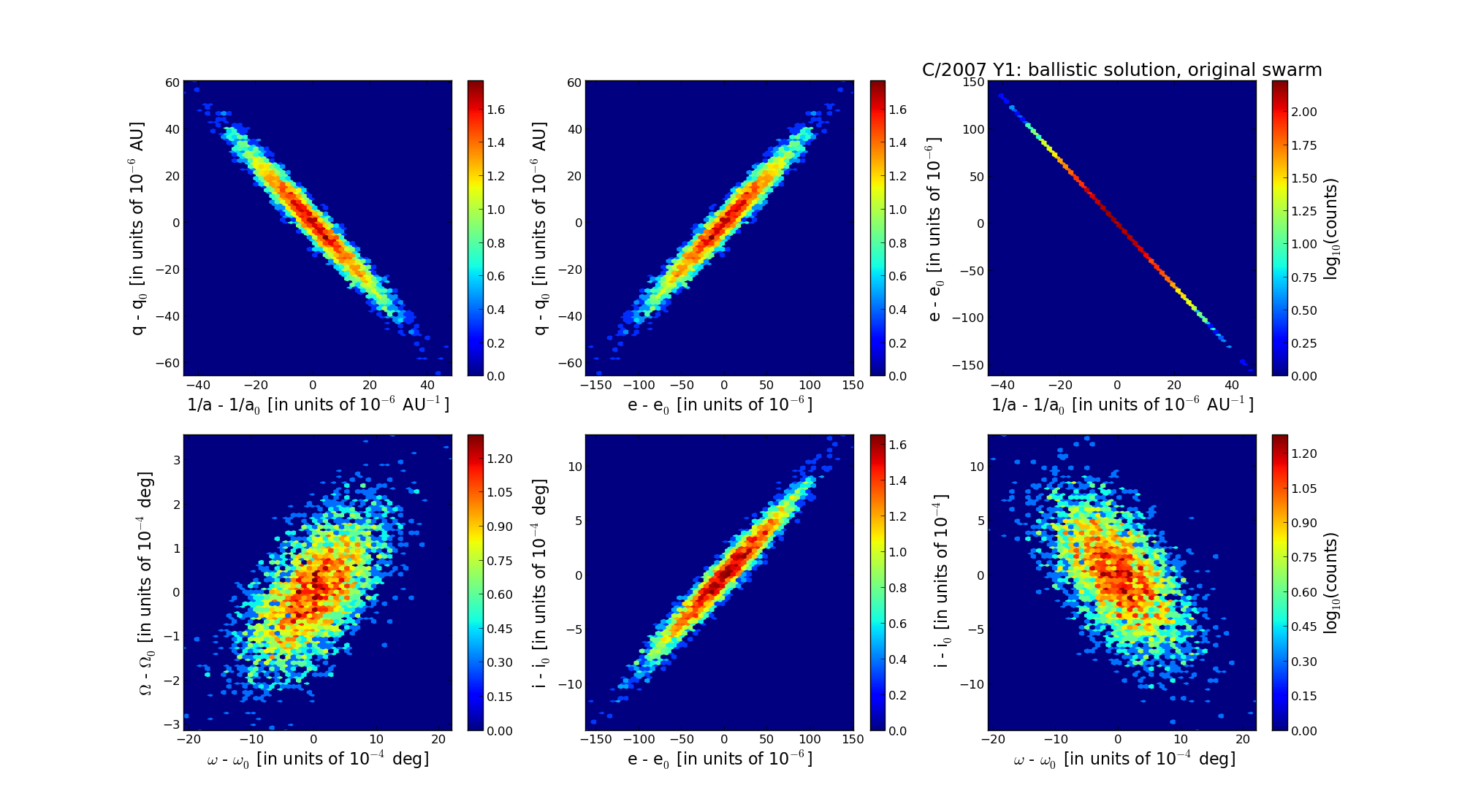| Solar System Dynamics & Planetology Group |
 |
C/2007 Y1 LINEAR |  |
| Solar System Dynamics & Planetology Group |
 |
C/2007 Y1 LINEAR |  |
| number of observations | 209 |
| number of residuals | 415 |
| data interval | 2007 Dec. 16 — 2008 May 3 |
| rms [arcsec] | 0.61 |
| orbit quality class | 2a |
| Epoch (TT) | 20080404.0 | = JD 2454560.5 |
| time of perihelion passage (TT) | 20080319.334554 | ± 0.002282 |
| perihelion distance | 3.34090683 | ± 0.00001666 |
| eccentricity | 1.00074172 | ± 0.00004139 |
| argument of perihelion [deg] | 357.128047 | ± 0.000534 |
| longitude of the ascending node [deg] | 133.091508 | ± 0.000091 |
| inclination [deg] | 110.179814 | ± 0.000359 |
| inverse semimajor axis [10-6 au-1] | -222.01 | ± 12.39 |

| Epoch (TT) | 17050722 | |
| time of perihelion passage (TT) | 20080318.752689 | ± 0.002305 |
| perihelion distance | 3.34342252 | ± 0.00001664 |
| eccentricity | 0.99988596 | ± 0.00004164 |
| argument of perihelion [deg] | 357.085840 | ± 0.000533 |
| longitude of the ascending node [deg] | 133.054139 | ± 0.000092 |
| inclination [deg] | 110.125744 | ± 0.000364 |
| inverse semimajor axis [10-6 au-1] | 34.11 | ± 12.46 |
| Epoch (TT) | 23131023 | |
| time of perihelion passage (TT) | 20080319.404978 | ± 0.002263 |
| perihelion distance | 3.34318656 | ± 0.00001678 |
| eccentricity | 0.99904941 | ± 0.00004165 |
| argument of perihelion [deg] | 357.056538 | ± 0.000534 |
| longitude of the ascending node [deg] | 133.054513 | ± 0.000092 |
| inclination [deg] | 110.169228 | ± 0.000361 |
| inverse semimajor axis [10-6 au-1] | 284.34 | ± 12.46 |